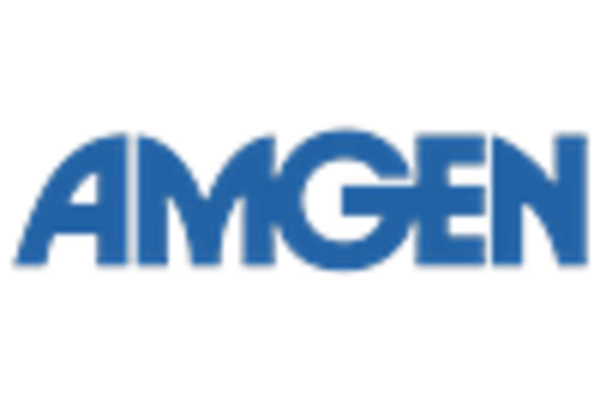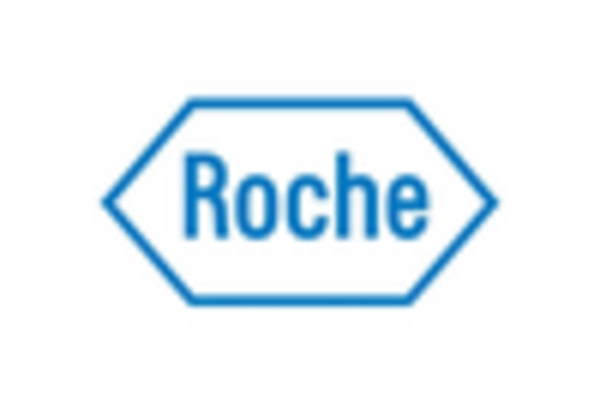Growing Aging Population
The demographic shift towards an aging population in the GCC is influencing the dynamics of the nanomedicine market. As the population ages, the incidence of age-related diseases such as cancer, cardiovascular disorders, and neurodegenerative conditions is expected to rise. This demographic trend necessitates the development of advanced therapeutic solutions that can address the unique healthcare needs of older adults. The GCC's elderly population is projected to increase by 50% by 2030, creating a substantial market for innovative medical interventions. Consequently, the nanomedicine market is likely to expand as healthcare providers seek to leverage nanotechnology to improve treatment outcomes for this demographic. The ability of nanomedicine to enhance drug delivery and reduce adverse effects aligns well with the requirements of an aging population.
Increasing Awareness and Education
Increasing awareness and education regarding the benefits of nanomedicine are crucial drivers for the market in the GCC. As healthcare professionals and patients become more informed about the potential of nanotechnology in improving treatment outcomes, the demand for nanomedicine solutions is likely to rise. Educational initiatives, workshops, and conferences are being organized to disseminate knowledge about the applications of nanomedicine in various therapeutic areas. This growing awareness is expected to lead to greater acceptance and adoption of nanomedicine technologies among healthcare providers and patients alike. Furthermore, as the GCC invests in healthcare education, the nanomedicine market is likely to experience enhanced growth, driven by a more informed populace that recognizes the value of innovative medical solutions.
Rising Demand for Targeted Therapies
The increasing prevalence of chronic diseases in the GCC region is driving the demand for targeted therapies, which are a hallmark of the nanomedicine market. As healthcare providers seek more effective treatment options, the ability of nanomedicine to deliver drugs directly to affected cells is becoming increasingly attractive. Reports indicate that the GCC healthcare expenditure is projected to reach $100 billion by 2025, with a significant portion allocated to innovative treatment modalities. This trend suggests that the nanomedicine market is poised for substantial growth, as stakeholders recognize the potential of nanotechnology to enhance therapeutic efficacy and minimize side effects. Furthermore, the integration of nanomedicine into existing healthcare frameworks may lead to improved patient outcomes, thereby reinforcing its importance in the region's healthcare landscape.
Investment in Research and Development
Investment in research and development (R&D) within the GCC is a critical driver for the nanomedicine market. Governments and private entities are increasingly allocating funds to support innovative research initiatives aimed at harnessing the potential of nanotechnology in medicine. For instance, the UAE has committed over $1 billion to healthcare innovation, which includes nanomedicine projects. This financial backing not only fosters collaboration between academic institutions and industry but also accelerates the translation of research findings into clinical applications. As a result, the nanomedicine market is likely to benefit from a robust pipeline of novel therapies and diagnostic tools, enhancing its competitive edge in the global arena. The emphasis on R&D is expected to yield breakthroughs that could redefine treatment paradigms in the region.
Collaboration Between Public and Private Sectors
Collaboration between public and private sectors is emerging as a pivotal driver for the nanomedicine market in the GCC. Partnerships between government agencies, research institutions, and private companies are fostering an environment conducive to innovation and commercialization of nanomedicine technologies. Such collaborations often result in shared resources, expertise, and funding, which can significantly accelerate the development of new therapies. For example, initiatives like the Qatar National Research Fund are actively promoting partnerships that aim to advance nanomedicine research. This collaborative approach not only enhances the scientific knowledge base but also facilitates the translation of research into practical applications, thereby strengthening the overall ecosystem of the nanomedicine market in the region.

















Leave a Comment